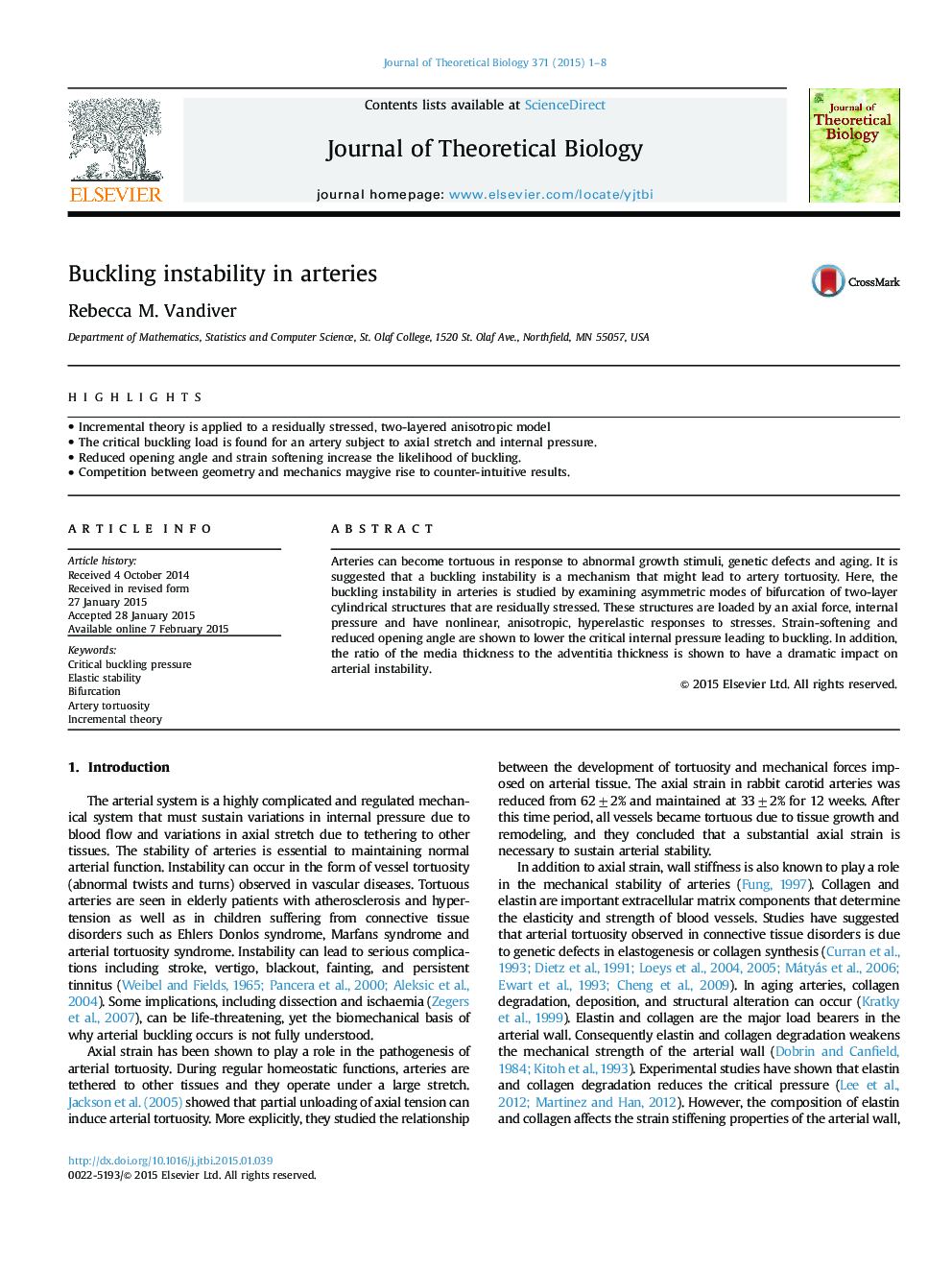| Article ID | Journal | Published Year | Pages | File Type |
|---|---|---|---|---|
| 6369777 | Journal of Theoretical Biology | 2015 | 8 Pages |
Abstract
Arteries can become tortuous in response to abnormal growth stimuli, genetic defects and aging. It is suggested that a buckling instability is a mechanism that might lead to artery tortuosity. Here, the buckling instability in arteries is studied by examining asymmetric modes of bifurcation of two-layer cylindrical structures that are residually stressed. These structures are loaded by an axial force, internal pressure and have nonlinear, anisotropic, hyperelastic responses to stresses. Strain-softening and reduced opening angle are shown to lower the critical internal pressure leading to buckling. In addition, the ratio of the media thickness to the adventitia thickness is shown to have a dramatic impact on arterial instability.
Related Topics
Life Sciences
Agricultural and Biological Sciences
Agricultural and Biological Sciences (General)
Authors
Rebecca M. Vandiver,
